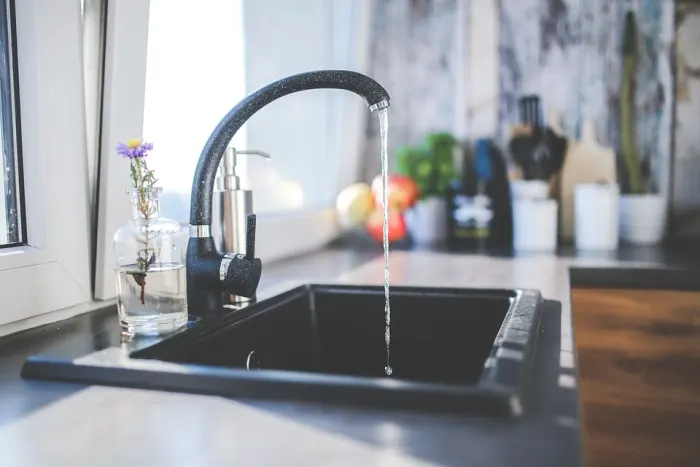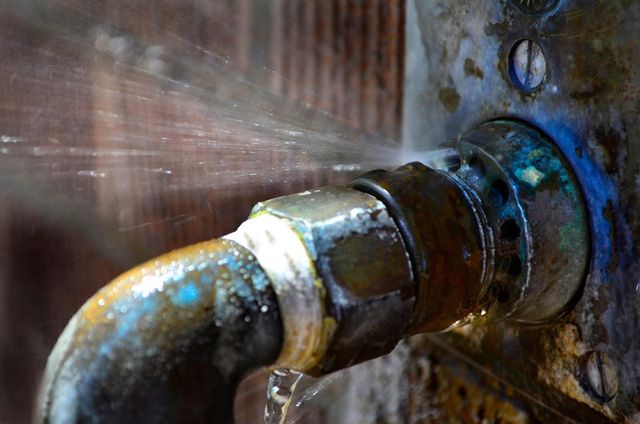Dealing with Noisy Plumbing in Your House
Dealing with Noisy Plumbing in Your House
Blog Article
Just about everyone may have their own unique theory when it comes to Diagnose Unwanted Plumbing Noises.

To identify noisy plumbing, it is essential to identify very first whether the unwanted noises take place on the system's inlet side-in other words, when water is turned on-or on the drain side. Sounds on the inlet side have actually differed causes: excessive water stress, used shutoff as well as tap parts, poorly connected pumps or various other devices, improperly put pipe bolts, and also plumbing runs including too many tight bends or other constraints. Noises on the drain side generally stem from bad location or, just like some inlet side sound, a format including limited bends.
Hissing
Hissing sound that occurs when a faucet is opened a little normally signals too much water pressure. Consult your local public utility if you presume this issue; it will certainly be able to tell you the water stress in your location and also can install a pressurereducing valve on the incoming water system pipeline if essential.
Thudding
Thudding noise, frequently accompanied by shuddering pipes, when a faucet or home appliance shutoff is switched off is a problem called water hammer. The noise and vibration are triggered by the reverberating wave of pressure in the water, which unexpectedly has no area to go. Occasionally opening a valve that discharges water rapidly into a section of piping including a limitation, elbow joint, or tee fitting can produce the very same condition.
Water hammer can generally be healed by mounting installations called air chambers or shock absorbers in the plumbing to which the trouble shutoffs or taps are attached. These devices permit the shock wave created by the halted flow of water to dissipate in the air they contain, which (unlike water) is compressible.
Older plumbing systems may have brief upright areas of capped pipeline behind wall surfaces on faucet runs for the same objective; these can ultimately fill with water, decreasing or damaging their performance. The treatment is to drain the water system completely by shutting off the primary water system valve and also opening all faucets. Then open up the primary supply valve and shut the faucets one at a time, beginning with the faucet nearest the shutoff as well as ending with the one farthest away.
Babbling or Shrieking
Intense chattering or screeching that takes place when a valve or faucet is activated, which normally vanishes when the fitting is opened completely, signals loosened or faulty interior parts. The remedy is to change the valve or tap with a new one.
Pumps and devices such as cleaning equipments as well as dishwashers can transfer motor sound to pipelines if they are incorrectly connected. Connect such products to plumbing with plastic or rubber hoses-never rigid pipe-to isolate them.
Other Inlet Side Noises
Creaking, squealing, scratching, breaking, and touching typically are brought on by the growth or contraction of pipelines, generally copper ones providing hot water. The noises occur as the pipelines slide against loosened fasteners or strike close-by house framing. You can typically determine the location of the issue if the pipes are exposed; simply follow the audio when the pipelines are making noise. More than likely you will find a loosened pipe wall mount or a location where pipes exist so close to floor joists or various other framing pieces that they clatter versus them. Attaching foam pipeline insulation around the pipelines at the point of contact must remedy the issue. Make certain bands and also hangers are safe and also offer ample support. Where feasible, pipe bolts ought to be attached to enormous architectural aspects such as structure walls rather than to mounting; doing so reduces the transmission of resonances from plumbing to surface areas that can amplify and also transfer them. If connecting bolts to framing is inescapable, cover pipes with insulation or other durable material where they call bolts, and sandwich the ends of new fasteners between rubber washers when installing them.
Fixing plumbing runs that deal with flow-restricting limited or numerous bends is a last hope that ought to be undertaken only after consulting a competent plumbing professional. Sadly, this situation is fairly common in older residences that may not have been built with interior plumbing or that have actually seen a number of remodels, especially by amateurs.
Drainpipe Sound
On the drainpipe side of plumbing, the chief goals are to get rid of surfaces that can be struck by falling or rushing water and to shield pipelines to contain inescapable audios.
In brand-new building, tubs, shower stalls, bathrooms, and wallmounted sinks and basins need to be set on or versus resistant underlayments to lower the transmission of noise with them. Water-saving bathrooms and also taps are less noisy than standard versions; install them instead of older kinds even if codes in your area still permit making use of older components.
Drainpipes that do not run vertically to the cellar or that branch into horizontal pipeline runs sustained at floor joists or various other framing present especially problematic noise troubles. Such pipelines are large sufficient to radiate considerable resonance; they likewise carry substantial quantities of water, that makes the circumstance worse. In brand-new construction, define cast-iron soil pipelines (the large pipelines that drain commodes) if you can manage them. Their massiveness has a lot of the sound made by water passing through them. Likewise, avoid transmitting drainpipes in wall surfaces shown rooms as well as areas where people collect. Walls having drainpipes must be soundproofed as was described previously, using double panels of sound-insulating fiber board and also wallboard. Pipes themselves can be covered with special fiberglass insulation produced the purpose; such pipes have a resistant vinyl skin (in some cases consisting of lead). Results are not always acceptable.
If Your Plumbing is Making These Sounds, There’s a Problem
A Bang or Thump When You Turn Off a Faucet
If a loud bang or thump greets you each time your turn off running water, you likely have a water hammer. A water hammer occurs when the water velocity is brought to a halt, sending a shock wave through the pipe. It can be pretty jarring — even worse, damaging to your plumbing system. All that thudding could loosen connections.
Strange Toilet Noises
You’re so familiar with the sounds your toilet makes that your ears will be attuned to anything out of the ordinary. Fortunately, most unusual toilet noises can be narrowed down to just one of several problems.
Foghorn sound:
Open the toilet tank Flush the toilet When you hear the foghorn noise, lift the float to the top of the tank If you’re ambitious, you can remove the ballcock valve and disassemble it to replace the washer. Or you can more easily replace the ballcock valve entirely. This device is relatively inexpensive and available at most any hardware store.
Persistent hissing:
The hissing following a flush is the sound of the tank filling. It should stop once the tank is full. But if the hissing continues, it’s likely because water is leaking out of the tank. The rubber flap at the bottom of the tank can degrade, letting water slip through and into the bowl. That’s why the tank is refilling continuously. Fortunately, this is an easy fix:
Cut the water to the toilet by closing the shutoff valve on the water supply line. Flush the toilet to drain the tank. Disconnect the flapper Attach the new flapper Gurgling or bubbling:
Gurgling or bubbling suggests negative air pressure in the drain line, likely resulting from a clog. As air releases, it causes the water in the toilet to bubble. This could either be a minor issue or a major one, depending on the clog’s severity. Clogs can be caused by toilet paper or more stubborn obstructions such as tree roots. If you can’t work out the clog with a plunger, contact a professional plumber for assistance because a clog of this magnitude could lead to filthy and unsanitary sewage backups in your sink bathtub.

Hopefully you liked our excerpt on How To Fix Noisy Pipes. Thank you for taking a few minutes to read our posting. Liked our blog entry? Please share it. Let others find it. We take joy in reading our article about Diagnose Unwanted Plumbing Noises.
Find Out More Report this page